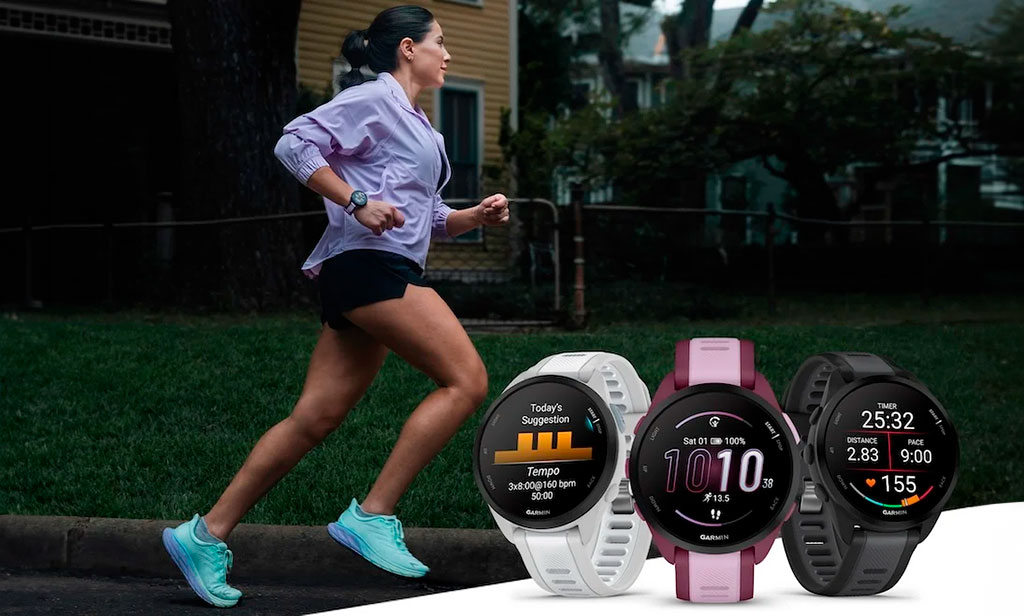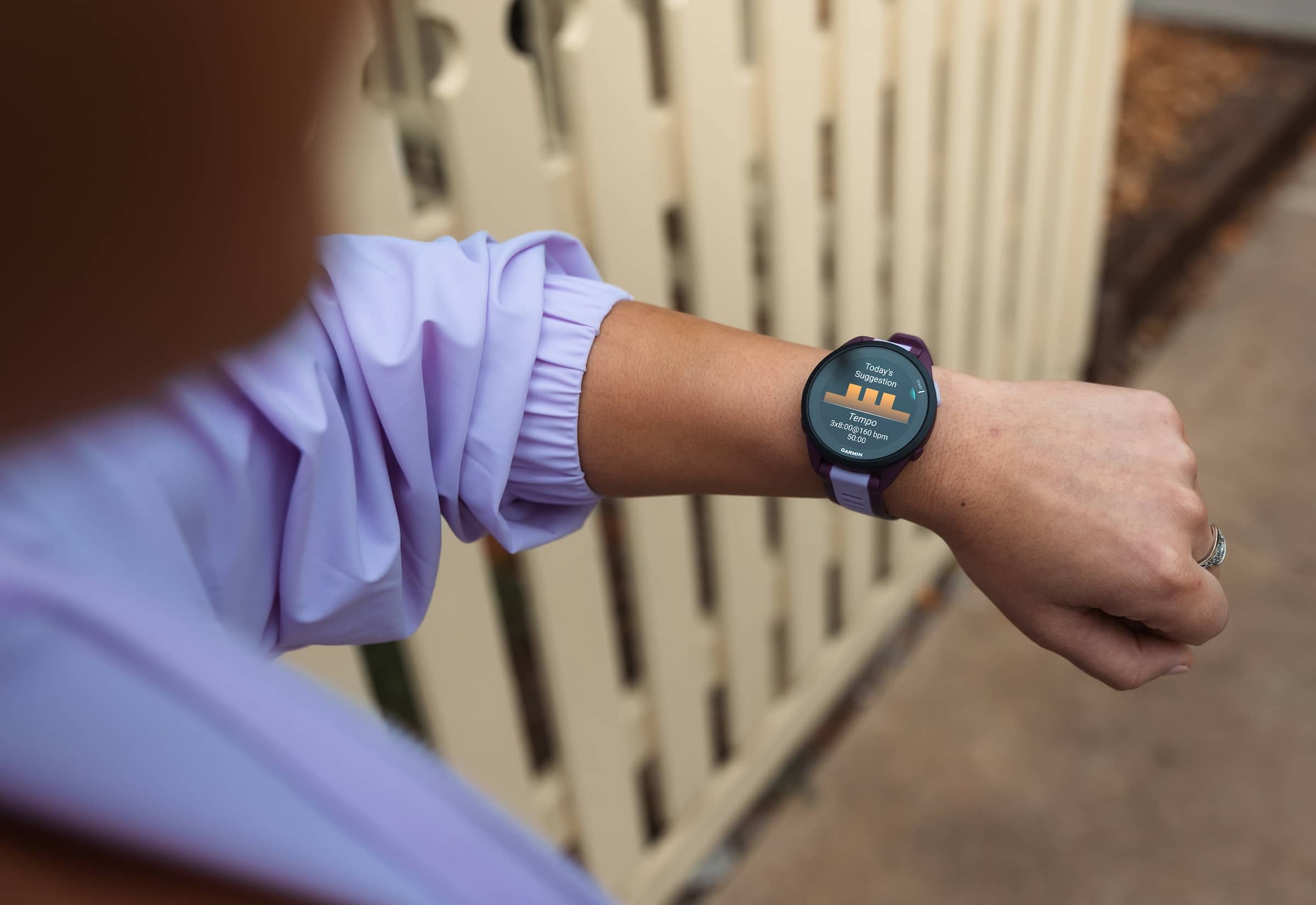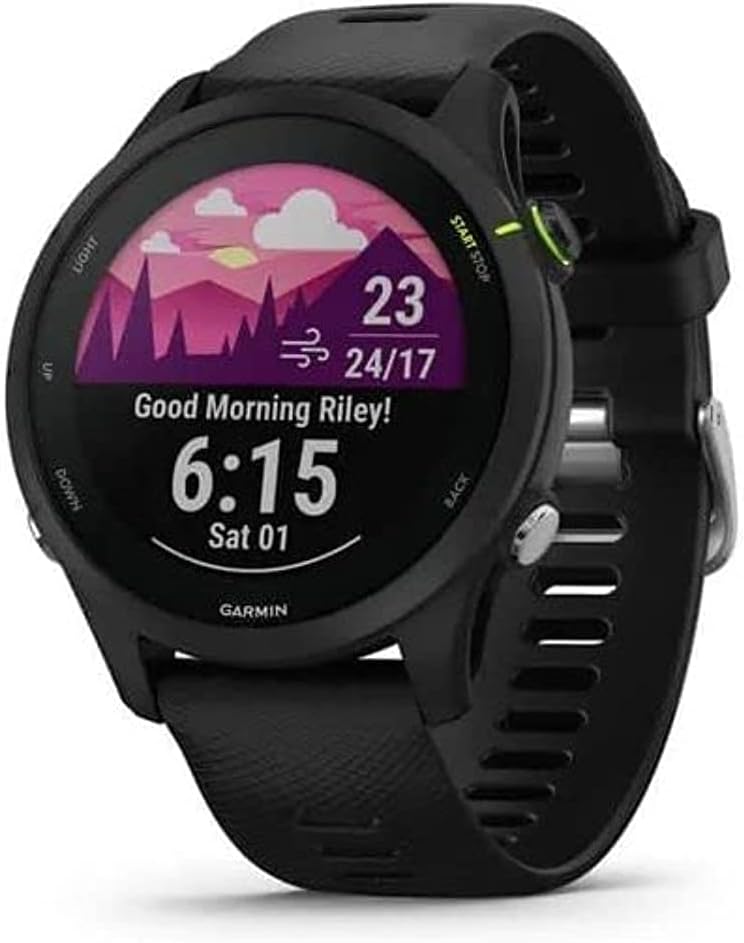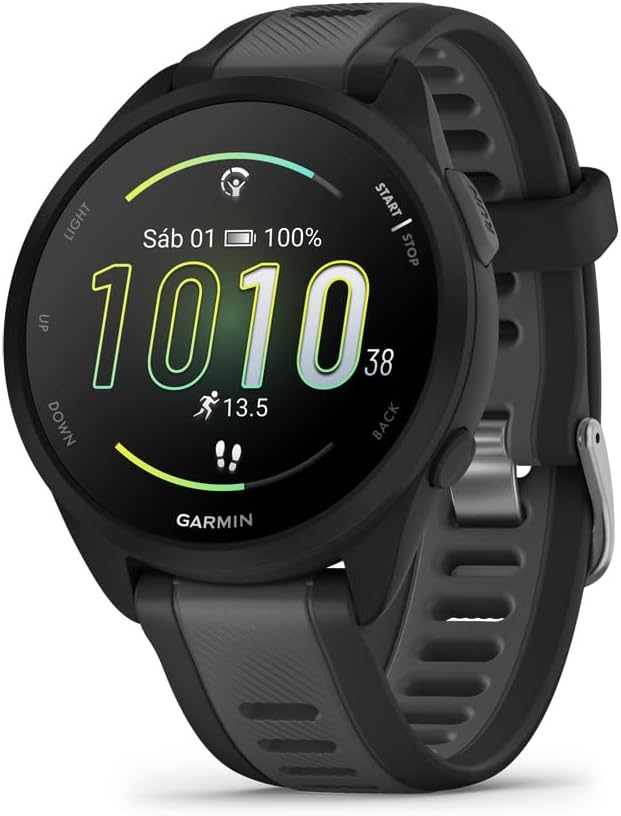There’s that point in your training when you stop just running and start tracking. Not the casual pace-counting, but the kind where every beat, every stride, every terrain change starts to matter. And when you hit that stage, you start looking at your gear with sharper eyes. So when Garmin dropped the new Forerunner 165, with that dazzling AMOLED screen and the promise of a modern feel, we had to ask: is it finally time to ditch the seasoned Forerunner 255?
We’ve worn both. We’ve sweat with them, raced with them, slept with them (and yes, sometimes forgotten to charge them). And let’s be clear: the Forerunner 165 may be new, but the Forerunner 255 isn’t backing down without a fight. It’s bulkier, more serious, and kind of feels like that older training buddy who won’t talk much but always finishes the workout. So, if you’re torn between the two—trust us, we get it. Let’s break this showdown down to the last heartbeat.
Two screens, two philosophies

You look at your wrist a hundred times a day—so screen quality? It matters. The 165 throws its hat in the ring with a bright 1.2-inch AMOLED touchscreen. It’s crisp, vibrant, and very, very pretty. Whether you’re under harsh daylight or just checking your recovery score in bed, the display looks sharp and feels premium.
Meanwhile, the 255 stays loyal to Garmin’s MIP display. It’s that practical friend who doesn’t get flashy but never lets you down. It’s visible even under full sun, doesn’t drain the battery like crazy, and just works. Not as “wow” as AMOLED, but in the middle of a trail run with mud on your shoes, you won’t care.
Now, here’s a curveball—the 255 comes in two sizes: 41mm and 46mm, while the 165 sits comfortably at 43mm, no options. If you have smaller wrists, that might tip the scales. But for pure visual pleasure and smooth navigation, the 165 clearly takes this round.
Battery life that keeps up, or doesn’t
This is where the 165 starts gasping a little. Let’s not sugarcoat it: the Forerunner 255 lasts longer. If you get the 46mm version, you’re looking at up to 14 days in smartwatch mode and around 30 hours with GPS on. The 41mm version isn’t far behind either.
The 165? It holds its own, but not for quite as long. It tops out at 11 days in smartwatch mode and about 19 hours of GPS tracking. That’s fine for daily runners or weekend warriors, but if you’re training for an ultra or doing multi-day hikes, the 255’s endurance becomes a game-changer.
You won’t notice the difference on a Tuesday jog, but on a back-to-back long weekend, the 255 keeps going while the 165 starts begging for a charger.
Sports tracking: variety wins, period
You’re not just running laps, are you? Because if your idea of fitness involves mixing it up, the Forerunner 255 becomes impossible to ignore. It supports a laundry list of activities: trail running, snowboarding, open-water swimming, HIIT, triathlons—you name it.
More importantly, it supports multisport mode, which lets you switch activities mid-session. Triathletes, this one’s speaking directly to you.
The 165? It’s focused. You’ve got running, cycling, pool swimming, hiking, yoga, a few others—but no multisport and fewer total profiles. If you’re all-in on running, it may be perfect. But if you wake up some days wanting to climb and swim before your 5K, you’ll feel the limits pretty quickly.
GPS accuracy: not just a geeky detail

You might think GPS is GPS—until you get lost in the city or your pace data goes haywire under a thick forest. That’s where the 255 flexes again. It supports dual-band GPS, which uses multiple satellite frequencies for improved precision, especially in challenging environments.
The 165 sticks with single-band GPS. It’s good. Most days, you won’t complain. But in tighter urban areas, dense trails, or unfamiliar terrain, you might find yourself a few meters off—and that adds up.
It’s the kind of thing you don’t notice until it matters. But once you do? You’ll start missing that extra layer of precision.
Training features: the real depth check
This might be the biggest deal for serious athletes. The 165 has all the essentials—heart rate, sleep tracking, VO2 Max, Pulse Ox, recovery advice. It’s solid. But the 255? It goes a lot deeper.
You get Training Status, which tells you if your workouts are helping or hurting. You get Training Load and Recovery Time, so you can pace your week smartly. You also get race widgets and suggested daily workouts that adapt based on how hard you’re pushing.
If you’re the kind of runner who wants to know why you’re tired and whether you’re improving, the 255 speaks your language. The 165 is more for those who follow plans, not dissect them.
Smartwatch perks: they match, mostly

In daily use, there’s a lot of overlap. Both watches let you receive notifications, use Garmin Pay, control music, and even store playlists if you get the Music version. They’ve got incident detection, weather, calendar, all the basics.
You’re not getting a full smartwatch replacement here—don’t expect WhatsApp replies or video calls. But for a running-focused device? They both give you what you need without distractions.
Still, only the 255 Music comes in both the 41mm and 46mm sizes, while the 165 Music is fixed at 43mm. If music storage matters and your wrists are picky, that could be your tiebreaker.
Comfort, fit, and that daily wear vibe
Wearing them all day and night? They’re both built for it. Lightweight, plastic case, chemically strengthened glass, water resistance up to 50 meters—nothing too fancy, but everything you need.
The smaller 255s and the 165 weigh around 1.4 ounces, while the standard 255 adds just a fraction more. We didn’t feel a dramatic difference in daily wear, and both pass the “sleep-with-it” test without issue.
Changing the bands is a snap thanks to Garmin’s quick-release mechanism, and both watches feel more sporty than stylish—but hey, they’re runners. They’re not trying to be dress watches.
Customization: same store, same options
Both watches tap into the Connect IQ store, where you can grab new watch faces, widgets, or data fields. Whether you’re tweaking your interval screens or downloading a hydration reminder app, the experience is identical.
There’s no added flair here—just steady access to Garmin’s ecosystem. What you see is what you get, and both watches get the same customization buffet.
Buttons vs touch: do your fingers care?

This one surprised us. At first, we loved the touch interface on the 165. Swiping through screens just feels modern, and it’s fast for setting timers, checking progress, or changing widgets.
Then we hit a rainy day. And gloves. And sweat. Suddenly, the 255’s physical buttons made a lot more sense. No missed taps, no ghost touches.
If you run in all weather and don’t want to fuss mid-workout, buttons are your friend. If you love gestures and bright menus, you’ll lean toward the 165. Either way, once muscle memory kicks in, both get the job done.
Final thoughts: which watch earns its keep?
Okay, here’s the moment we hit the wall and look back at the splits. We’ve worn both watches for long enough to form an opinion—and yeah, it’s pretty clear.
The Forerunner 165 is nice. The screen is beautiful, the interface feels fresh, and for people who train consistently but not obsessively, it ticks all the boxes. You’ll love how it looks. You’ll like how it works. And if your training is straightforward, it’s enough.
But the Forerunner 255? It’s still the one you reach for when you want depth. When you want to get nerdy about your recovery. When you’re juggling running with open-water swims and the occasional bike sprint. When you’re stacking workouts and trying to shave seconds, not minutes.
Sure, it looks more “Garmin 2022” than “Garmin 2024”. But under the hood, it’s got the edge on tracking precision, battery life, and advanced metrics. It’s just more serious about training.
We wanted to fall for the 165—honestly, we did. That screen made us swoon. But after a few tough sessions, we found ourselves drifting back to the 255. It’s like choosing between running shoes that look good versus the ones that carry you through mile 20.
And if you’re asking us which one we’d trust on race day?
We’re not even hesitating.


